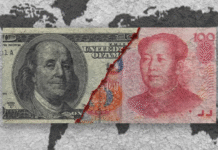In the wake of the latest visit on December 24th, International Atomic Energy Agency (IAEA) inspectors have confirmed Iran’s significant increase in highly enriched uranium production at the Natanz and Fordo nuclear facilities. This follows Tehran’s announcement weeks ago about ramping up production, with recent figures revealing a surge from three to nine kilograms of uranium enriched to 60 percent purity.
The IAEA estimates that approximately 42 kilograms of uranium at this enrichment level could theoretically be used to build an atomic bomb. While weapons-grade uranium requires 90 percent enrichment, experts emphasize that only one more technical step is necessary to reach this critical threshold.
Iran’s enrichment activities have been a cause for concern in the past. In March, inspectors at Fordo discovered uranium particles enriched to over 80 percent, raising eyebrows and prompting explanations of possible oversights. Notably, Iran had curtailed production in the summer during secret negotiations with Washington, which ultimately led to the release of detainees and the unfreezing of six billion US dollars in Iranian assets previously restricted by international sanctions.
However, tensions escalated again after the release of prisoners. Iran withdrew accreditation from IAEA inspectors, citing concerns about the agency’s neutrality, reducing the original inspection team to a mere third. The IAEA, based in Vienna, warned Tehran against unilateral actions, particularly given its support for militant groups in the Middle East, contributing to regional instability.

Iran’s backing of radical groups like Hamas in the Gaza Strip is an open secret, and recent attacks on cargo ships in the Red and Arabian Seas by Yemeni Houthi rebels, with U.S. intelligence implicating Iran, have heightened international concerns. The National Security Council in Washington expressed alarm over Iran’s “nuclear escalation” and its vassals’ “dangerous and destabilizing activities in the region,” as highlighted in the latest Atomic Energy Agency report.
In response, Mohammad Eslami, head of Iran’s nuclear program, dismissed the reports of uranium enrichment as a “media frenzy.” He insisted that these accusations are politically motivated and part of a conspiracy orchestrated by the U.S. and Israel to divert attention from the ongoing conflict in Gaza. As always, Tehran maintains that its nuclear program is exclusively for civilian purposes. The international community now faces the challenge of navigating through these conflicting narratives as Iran’s nuclear activities once again take center stage on the global agenda.












